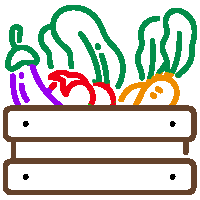Приказ основних података о документу
Breeding New F-1 Tomato Hybrids of rin Genotype
| dc.creator | Marković, Živoslav | |
| dc.creator | Zdravković, Jasmina | |
| dc.creator | Cvikić, Dejan | |
| dc.creator | Pavlović, Nenad | |
| dc.creator | Zdravković, Milan | |
| dc.date.accessioned | 2021-06-07T12:21:30Z | |
| dc.date.available | 2021-06-07T12:21:30Z | |
| dc.date.issued | 2012 | |
| dc.identifier.isbn | 978-90-66055-85-8 | |
| dc.identifier.issn | 0567-7572 | |
| dc.identifier.uri | http://RIVeC.institut-palanka.rs/handle/123456789/121 | |
| dc.description.abstract | Serbian local tomato market prefers big fruit weight 200 gr., and long shelf life. Slow ripening and long shelf-life of tomato fruits are traits controlled by several ripening inhibitor genes (nor-non ripening, nr- never ripe, rin-ripening inhibitor, alc-alcobaca) and other. In our tomato breeding programs the rin mutations are used to enhance the shelf-life of tomato fruits in commercial practice. Fruits of these genotypes ripe slowly, have a shelf life of 2 -3 weeks and at the same time have relatively good colour, firmness and taste. Maternal parental lines had been of rin/rin, and paternal parental lines of rin(+)/rin(+) genetic constitutions The best practical results had the combinations of rin/rin(+) genotype. The results are new tomato hybrids: Nada F-1, Sampion F-1, Sef F-1, Sidra F-1 and Rebus F-1 of rin/rin(+) genotype. In these F-1 hybrids shelf life was from 18 to 30 days. This period is satisfactory for market needs and is much better than in commercial grown hybrids Balkan F-1 and Marco F-1 (5 and 8 days, respectively). These hybrids have sp(+) plant (except, Rebus F-1 have: sp plant), very firm fruits with deep red color, average fruit weight from abot 190 to more than 220 g., and good deseases resistance (VFN or VTm-22). Maturity is from early (Sef F-1, Rebus F-1), medium early (Nada F-1, Sidra F-1) and medium late (Sampion F-1). It was observed the decrease of content of total acids and lycopene in heterozygote rin/rin(+) F-1 tomato hybrids, but that was not statistically significant. There was no statistical difference between the hybrids and lines regarding the chemical compound except for the lycopene content. Maternal components of hybrids (rin/rin genotypes) had low level of lycopene (from 6.0 to 6.8 mg/100 g FM) comparing to all hybrids where their level has been significantly higher (from 13.2 to 22.4 mg /100 g FM). | en |
| dc.publisher | International Society for Horticultural Science | |
| dc.rights | restrictedAccess | |
| dc.source | Acta Horticulturae | |
| dc.subject | tomato hybrids | en |
| dc.subject | shelf-life | en |
| dc.subject | ripening inhibitors | en |
| dc.title | Breeding New F-1 Tomato Hybrids of rin Genotype | en |
| dc.type | conferenceObject | |
| dc.rights.license | ARR | |
| dc.citation.epage | 168 | |
| dc.citation.other | 960(): 165-168 | |
| dc.citation.spage | 165 | |
| dc.citation.volume | 960 | |
| dc.identifier.doi | 10.17660/ActaHortic.2012.960.23 | |
| dc.identifier.scopus | 2-s2.0-84872018333 | |
| dc.identifier.wos | 000323606200023 | |
| dc.type.version | publishedVersion |


